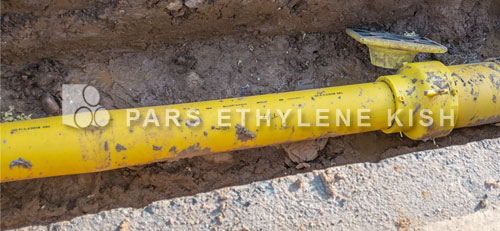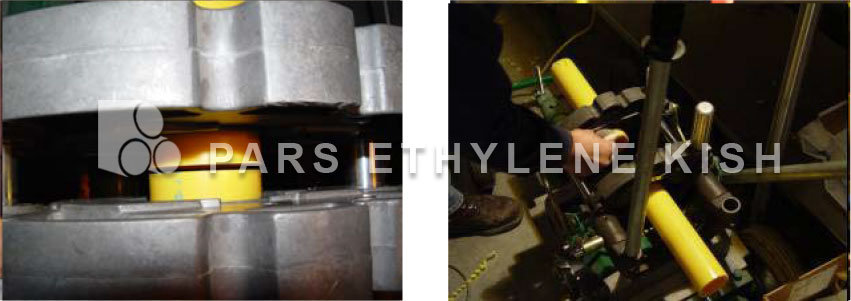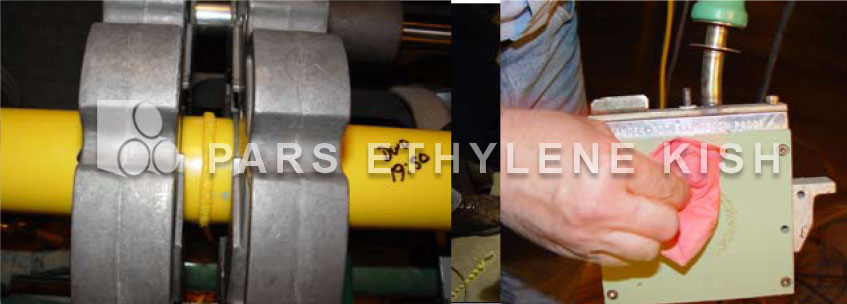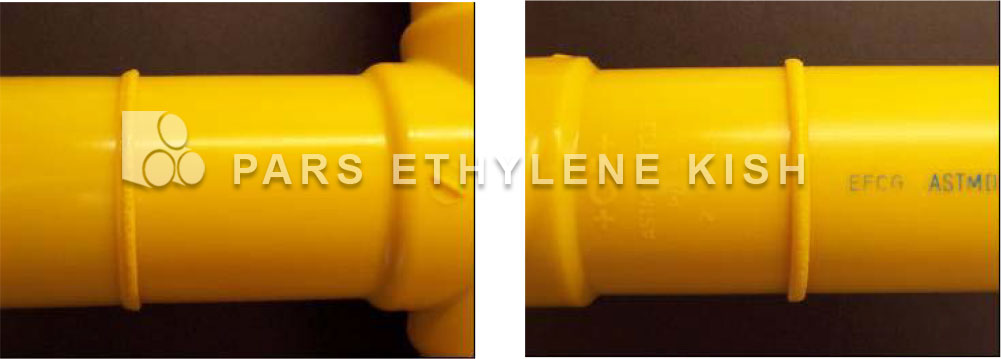
Butt Fusion Joining Guidelines
This procedure is intended for PA-11 fuel gas pipe (per ASTM D 2513) that has a grade designation (in accordance with PPI TR-4) of PA 32312.
Butt Fusion Procedures:
The principle of butt fusion is to heat two surfaces to a designated temperature, then fuse them together by application of a sufficient force. This force causes the melted materials to flow and mix, thereby resulting in fusion. When fused according to the proper procedures, the joint area becomes as strong as or stronger than the pipe itself in both tensile and pressure properties.
Field-site butt fusions may be made readily by trained operators using butt fusion machines that secure and precisely align the pipe ends for the fusion process. The seven steps involved in making a proper butt fusion joint are:
1. Clean the pipe ends
2. Securely fasten the components to be joined in fusion machine
3. Face the pipe ends
4. Align the pipe profile
5. Melt the pipe interfaces on heater plate with minimal contact pressure
6. Join the two profiles together using torque wrench to the appropriate interfacial pressure
7. Hold under pressure until cool to the touch
1 - Clean
Clean and wash the pipe ends about 1-2” back with an alcohol saturated wipe. Then use a clean paper towel or textile rag to dry and remove any dirt and contaminants

2 - Secure
Remove all foreign matter. Clamp the components in the machine. Check alignment of the ends and adjust as needed.
3 - Face
The pipe ends must be faced to establish clean, parallel mating surfaces. Facing is continued until a minimal distance exists between the fixed and moveable jaws of the machine and the facer is locked firmly and squarely between the jaw bushings.
4 - Align
Remove any pipe chips from the facing operation and any foreign matter. Adjust clamping jaws until the outside diameters of the pipe ends are aligned with each other. The jaws must not be loosened or the pipe may slip during fusion. Use alcohol wipe to clean the faced ends of the pipe and remove any dirt and contaminants.
5 - Melt
Verify with surface pyrometer that heater temperature is within the desired range (495-505°F). Bring the pipe ends into full contact with the heater (initial contact should be under moderate pressure). After holding the pressure very briefly, it should be released without breaking contact. Flip up the locking cam mechanism to maintain contact and hold the components in place, without force, while a bead of molten PA-11 develops between the heater and the pipe ends for the defined preheat time. The bead size seen with proper preheat time is dependent on the pipe size. For 2” IPS pipe, a bead size of approximately 1/16” – 1/8” should be present. The approximate time required to obtain this melt bead size is 60 to 75 seconds from initial contact between the pipe ends and the heater.
6 - Joining
After the pipe ends have been heated for the proper time, quickly remove the heater tool and promptly bring the molten pipe ends together with the proper fusion force. The fusion force is determined by multiplying the interfacial pressure, 60-90 psi, by the pipe area. For manually operated fusion machines, a torque wrench shall be used to accurately apply the proper force Applying this fusion force will cause the formation of the melt beads at the fusion interface.

7 - Hold
Maintain the 60-90 psi interfacial pressure by hand for 45 to 60 seconds, then release hand pressure making sure the locking cam mechanism is still flipped up. Allowing proper times under pressure for cooling prior to removal from the clamps of the machine is important in achieving joint integrity. For 2” IPS pipe, the appropriate cooling time under pressure (via locking cam) is approximately 10 minutes. The fusion force should be held between the pipe ends until the surface of the bead is cool to the touch. The pulling, installation or rough handling of the pipe should be avoided for an additional 30 minutes. Wipe surfaces of heater plate with a clean, untreated lint-free cotton cloth.
It is worth noting that in the case of a butt fusion between PA-11 pipe and a PA-11 molded fitting the two melt beads will often not appear to be exactly the same (as shown in the photograph to the left below). This is because the pipe is manufactured by the extrusion process and the fitting is manufactured by the molding process. These two processes introduce different stresses in the final product, and this is often manifested by of the different melt beads. This exact same phenomenon is observed in butt fusions made from PE extruded pipe and PE molded fittings. If the fusion procedure was followed accordingly, the butt fusion has been made properly, and the field operator should be made aware of this potential difference between a pipe and a fitting melt bead appearance.
For more pictures , Data sheet and tables please download Butt Fusion Joining Guidelines




